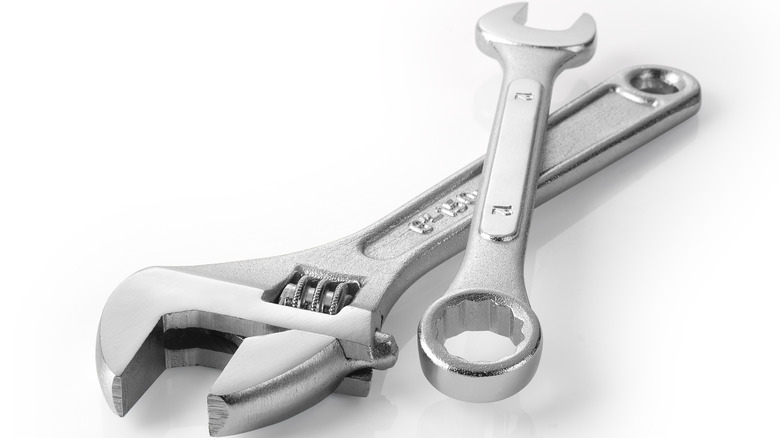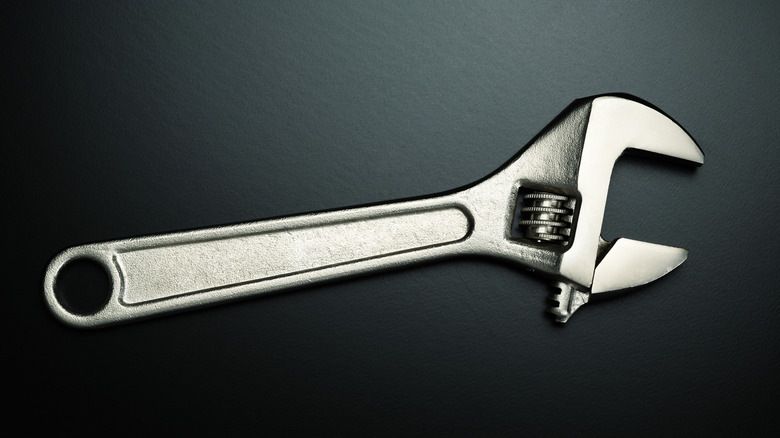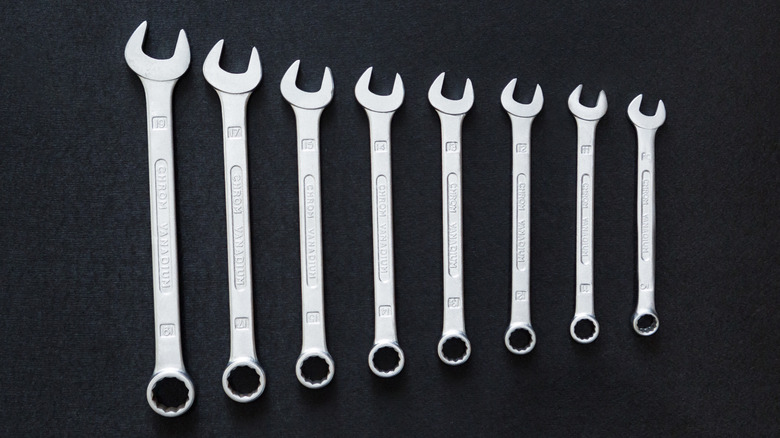Combination Wrench Vs. Adjustable Wrench: How To Pick The Right Tool For The Job
All sorts of projects around the house involve nuts and bolts. Nuts and bolts appear in cars, lawn equipment, playground structures, and much more. When loosening or tightening these fasteners, which tool works best? The two most common options are the adjustable crescent wrench and the combination wrench. According to Traqline, as of March 2022 wrench sets comprised 7.6% of hand tool sales in the U.S. over the previous four quarters, putting them ahead of pliers (5.5%) but just behind screwdrivers (7.7%). Beyond wrenches, you can find several underrated tools at Harbor Freight that could help you get the job done faster.
There are several options when working with nuts and bolts, including impact drivers, socket wrenches, and a host of other specialty devices for the job. However, unless you collect tools or have access to a fully stocked workshop, chances are you'll only have a few options. The combination wrench and the adjustable wrench are typically the options most people have on hand. These tools come from several manufacturers, are likely to be at your local hardware store, and come in a range of prices and quality levels. So, which one is best suited for common jobs you might encounter around the home?
All about the adjustable wrench
An adjustable wrench, also called a crescent wrench, is made from steel and features an open U-shaped end. One of the jaws on the U-shaped end is fixed, while the other can move to accommodate various sizes of fasteners. The movement is made possible by turning a worm screw at the base of the jaws to grip whatever fastener you're working with.
The most significant advantage of the adjustable wrench is that you have the flexibility to resize the wrench depending on the situation. If your project requires many sizes of nuts and bolts, using one tool instead of several could save you time and money.
The adjustable wrench does have some downsides, however. If you're trying to loosen particularly stubborn fasteners, the adjustable wrench can experience gripping issues, causing it to slip off. If you're working in a confined area, a wrench slip could send your hand flying into a hard surface. In addition, it's easy to inadvertently get dirt, sand, or grit inside the twisting mechanism that adjusts the jaws, leading to jams that could cost you precious time.
All about the combination wrench
The combination wrench is made from steel and usually comes in a set. This wrench includes an open U-shape on one end and a loop on the other. Both ends are designed for the same size fastener. These wrenches are single pieces; nothing is adjustable. The sets sold in hardware stores offer a collection of the most common sizes of fasteners you're likely to encounter.
Combination wrenches are ideal when loosening stuck fasteners that seem determined not to move. The U-end offers a tight enough fit for most applications, and the loop end keeps things even tighter if you're concerned about slipping off the nut or bolt. While you may need to reach for different sizes during your project with a combination wrench, you won't need to worry about making the tiny changes necessary with an adjustable wrench.
However, since combination wrenches typically come in sets, you will spend more money than you would for one adjustable wrench. It's also frustratingly easy to misplace one or more wrenches in a set. Finally, hand tools aren't suited for every application. If you're considering a big upcoming project, the best-rated Milwaukee power tools at Home Depot are a great place to start.


